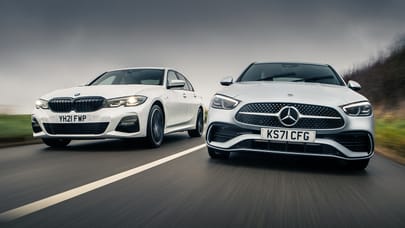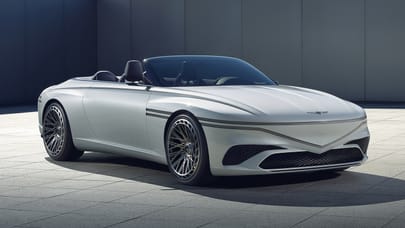

OK, we all know the World Rally Championship produces pretty special images of cars jumping, crashing and sliding in fantastic locations. But how hard can it actually be to point a camera at a car 6ft in the air, get it perfectly in focus, make sure the plume of smoke and occasional exhaust flame burping out the back are in the shot, and press a button on top? Pretty hard, actually.
Words and pictures: Rowan Horncastle
Advertisement - Page continues below
Ever up for an ambitious challenge, last week TG HQ decided that I should hop over to Spain for the penultimate leg of this year's exciting championship finish. I was selected purely on the basis that I was the person left in the office who could find the on/off switch on a camera the fastest.
And just to make sure that I had a rough idea of what I was doing and didn't get run over, I clung onto the coattails of two WRC photographers with more than 750 rallies under their tabards: Maurice Selden and Les Kolczak.

There was other reason TG wanted to be there: we've been playing a lot of the new licensed WRC game - WRC 2 - in the office recently, and the punishing handling model has got a few people hooked. More importantly, for the first time in years, Sebastien Loeb has a contender at the top: going into Spain Sebastien Loeb and Mikko Hirvonen were tied after 11 rounds. So we knew the top drivers would be pushing hard...
Advertisement - Page continues below
The first thing I learned from the pros: you need a decent location and there are essentially two options. You can try and find somewhere where the car is likely to do something spectacular: jump in the air, pile through a puddle, or plough uncontrolled into a thicket of trees. Two: you find somewhere picturesque that illustrates where you are in the world. Luckily for me, the pros had done the hard work the day before, driving all 406.53 kilometres of the timed stages and noting down the best places to shoot, so we picked option two and we headed for a dusty olive grove.
As the top drivers came past me for the first time, I quickly realised two things about rally photography. It's not easy, and it really is rather dangerous. The stages are long, and the marshals can't be everywhere, so fans often get as close to the action as they want.

Well-known or particularly dangerous sections of the stages have marshals who will shoo you behind a piece of red tape, but compared to photographing circuit racing, you can literally get so close you can touch the cars. I very nearly learned the hard way, leaning out of a ditch as a Mitsubishi Lancer Evo X intercooler tried to brand my forehead with ‘Ralli Art'.
I moved back, and encountered my next problem. The first day of the Spanish rally is run on gravel, which creates dust. Lots and lots of dust. More dust than Marjorie Dawes could ever eat. And it gets everywhere.

Be warned, if you want a shot of Sebastien Loeb's DS3 kicking up a concoction of rocks and dust be prepared to be covered in the stuff. It was only after receiving countless dead-legs and cut shins that I took note of the pros' technique: nail the shot, turn your back, and curl up into a tight ball of safety.
Because of the dust lingering in the air, cars had a gap of three minutes (later increased to four) so they could see where they were going. This gave me time to change position, adjust my camera settings, and cough out the heavy dust lining my lungs.
Dust and imminent death aside, the hardest part of taking pictures of rallying is simply knowing where they will go and what they will do. It doesn't help that the drivers quite often don't know either. So I was advised to guess a likely line, then assess the light conditions.

Tips on lighting: cars always look better in the sun, so try and find breaks in the trees where the car will be out of shadows. And be aware that some cars photograph a lot better than others. Cars with straight lines and contrasting colours are picked up easily by the camera's sensor, so that's why some cars come out a lot better than others.
Advertisement - Page continues below
For the final two days the rally moved onto tarmac, which made it a lot easier for me to shoot, and also for Loeb to extend his lead at the top: he notched his seventh victory in Spain and secured the manufacturer's title for Citroen.
Crucially he also clinched a single bonus point for clocking the third fastest time on the final Power Stage, so he goes into next month's UK Rally with a narrow lead over Ford driver Mikko Hirvonen. Win that, and he'll bag an unprecedented eighth WRC drivers' title. Head down and try and take some pictures yourself. Just be warned, it isn't as easy as it looks...- Advertisement - Page continues below






















